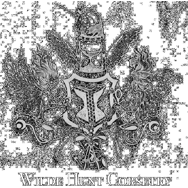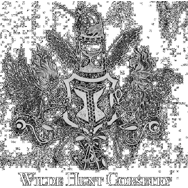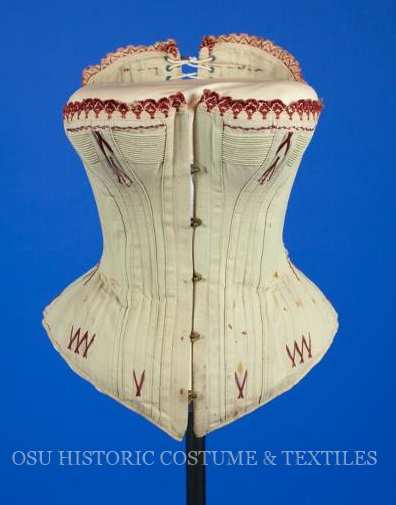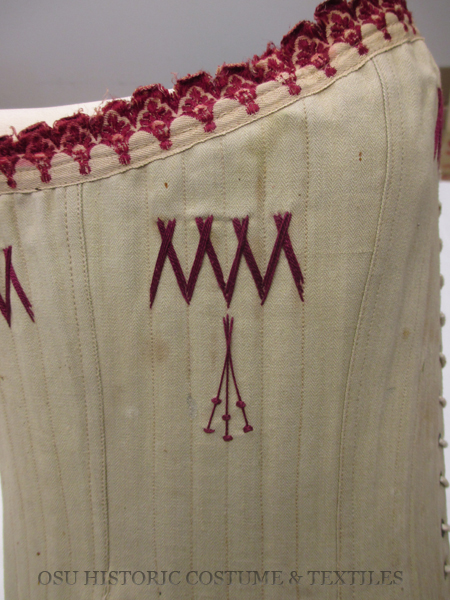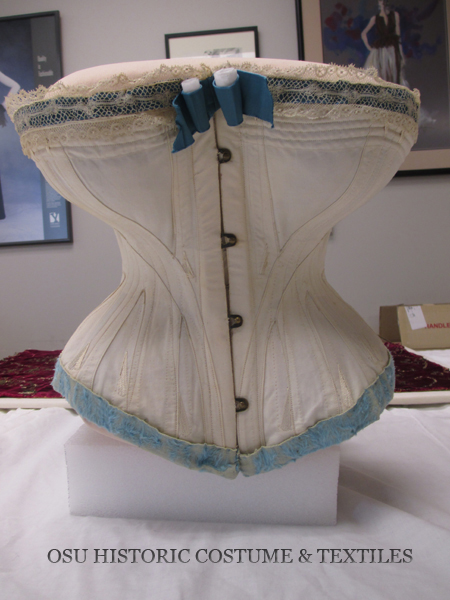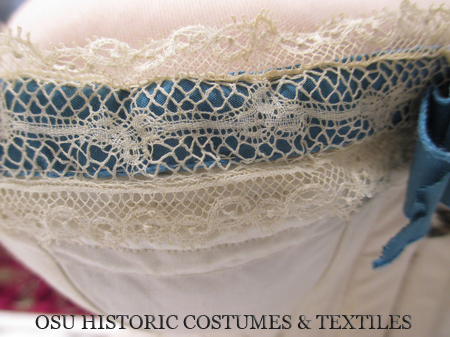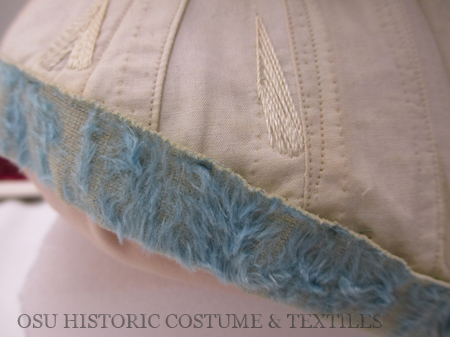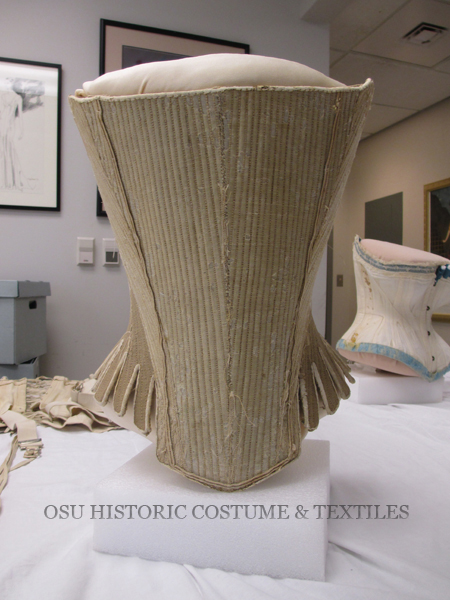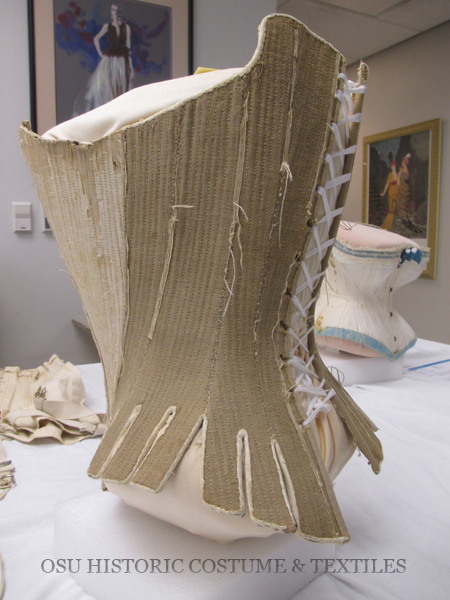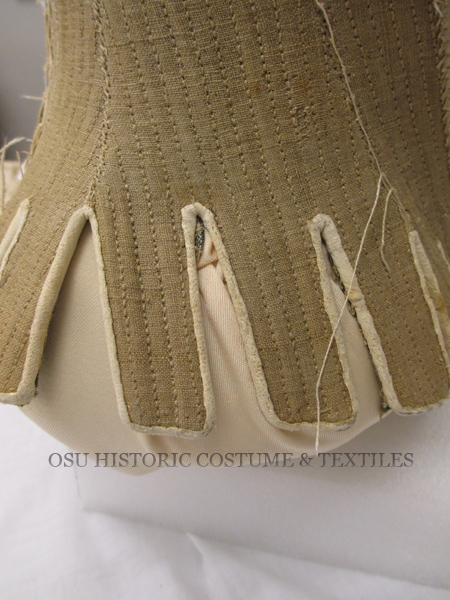Love this! Thanks for documenting! I'm actually making a pair of 18c. stays right now - so I find those terribly interesting!
Antique Textile Adventure – Part Two: Antique Corsets

This is the second installment of my blog series about my visit where I was kindly given special permission by the curators to study items at The Ohio State University Historic Costume and Textile Collection. If you missed my first post on embroidery, click here to catch up
Or click on “Read More” below to learn about antique corsets
This post covers a small selection of the corsets I studied on the day of my visit. The first corset I chose to examine was a beautiful light grey colored coutil Victorian-era corset with scarlet embroidery and trim. Scarlet and grey? How appropriate for OSU! I have a friend who mercilessly teases me that it is only a matter of time before someone wishes to commission an OSU themed corset from me. I’m a little frightened by the thought (which of course greatly amuses my friend), but if it were as lovely as this historic example – I think I *may* be able reconcile myself.
I had discovered from reading in Corsets and Crinolines by Norah Waugh that “White corsets were considered more ladylike, though grey, putty, red, and then black ones were found more economical. ” For those who are unfamiliar, coutil is a very fine herringbone weave cotton fabric which is ideal for corsetry because it is very resistant to stretching. It will hold true to the cut of the pattern rather than warp excessively to the wearer’s natural proportions like a lot of less expensive fabrics will. The collection’s record of this example states the date to be from between 1880-1889.
The corset was embroidered with what is called “flossing”(the red “X” shaped embroideries on this example), a decorative and functional stitching that helps to hold the boning in their channels snugly. This snugness prevents wrinkles through out the body of the corset which would result if there were too much slack in the channels. It also prevents unnecessary wear to the fabric that would happen if the steel boning was free to slide in the channels. It’s also worth mentioning that the knob side of front busk closure had an unusually tall profile. The knobs of modern busks do not raise up as high as this antique example. This is really curious because the corset’s fabric was quite thin, not necessitating the extra height.
Next up was this white with blue corset dated from 1870-1875. It has the most peculiar silk plush trim on the bottom and a really lovely intricate lace at the top. This too had some cording at the bust for support. The patterning was different on this example, utilizing both hip and bust gores to help create the more dramatic, extreme curves.
If you’re dying to see more Victorian era clothing click over here to see a wonderful Pinterest board with some stunning examples.
And now for something much earlier! I was really attracted to the simple sculptural form of theses stays said to date from between 1790-1799.
I think the leather lining of the tabs is particularly beautiful and ingenious. You see, to try to bind all of those tabs with a cloth tape would be incredibly difficult – even if it were cut on the bias. But leather is so much more supple and malleable, turning tight curves much easier.
Of course the eyelets were worked with thread instead of being metal, like the ones we use today. I must say I am grateful I do not have to hand work all my eyelets on the corsets I make!
If you are curious to see what sort of garments would be contemporaneous with the stays, check out this terrific Pinterest board of 1750-1790’s fashion.
I hope you enjoyed this installment of my textile adventure! You can join my email newsletter if you wish to be informed of the next blog post in this series.
